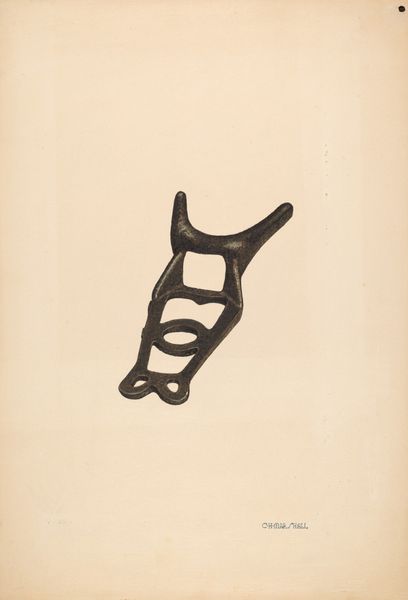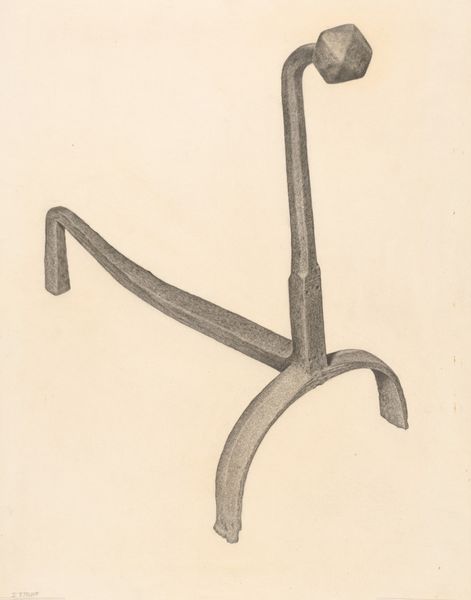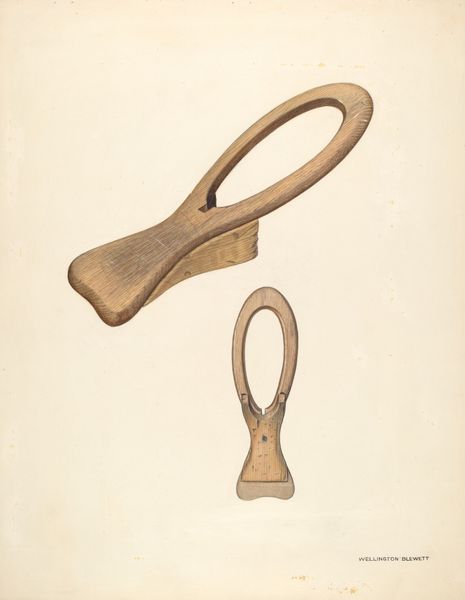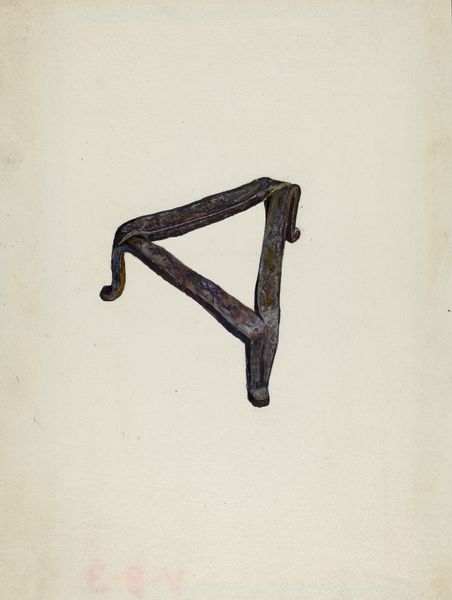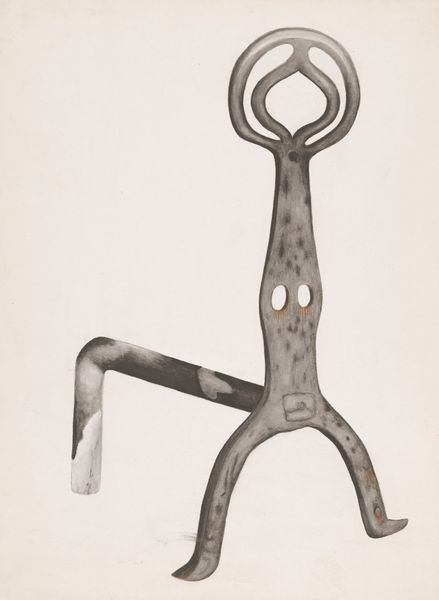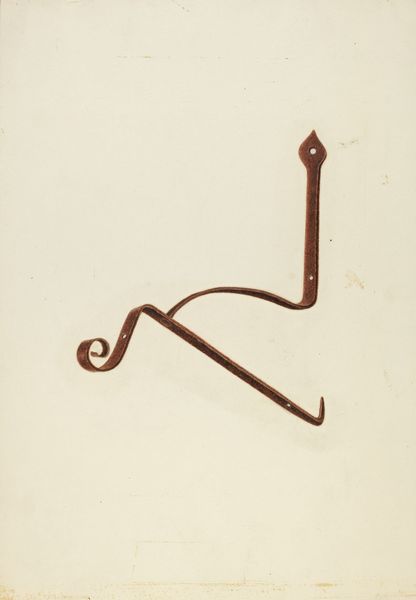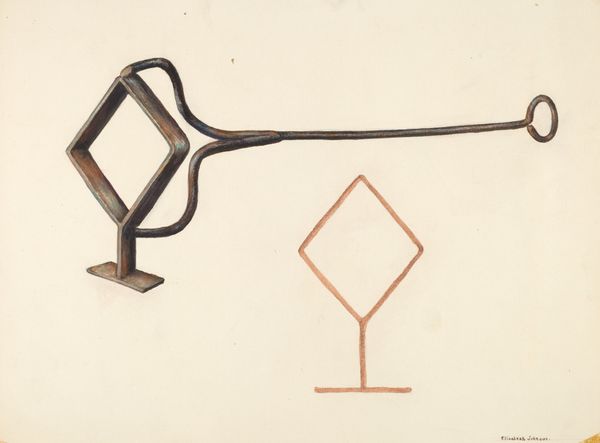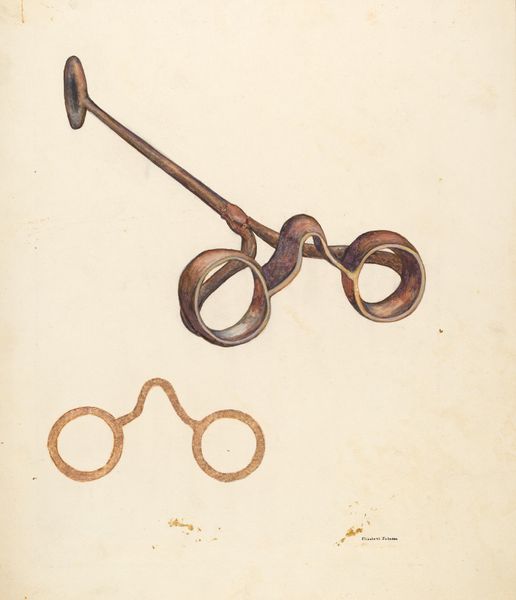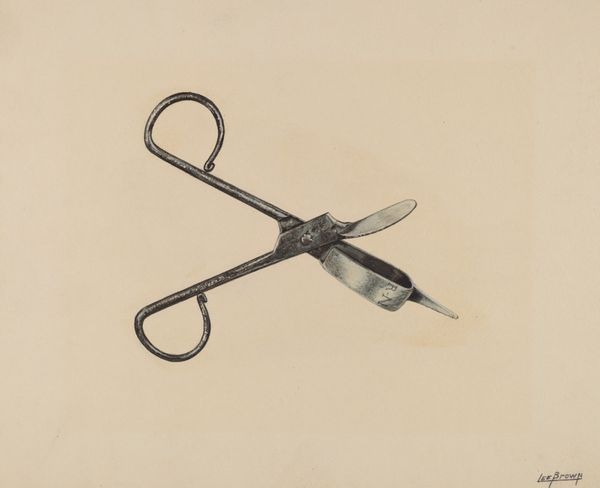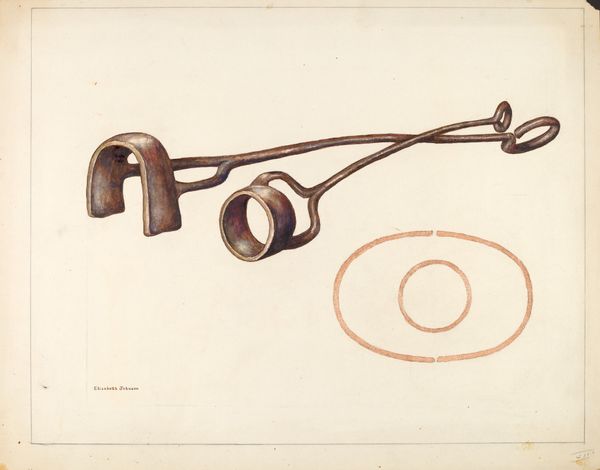
drawing, watercolor
#
drawing
#
watercolor
#
watercolour illustration
#
academic-art
#
watercolor
Dimensions: overall: 35.5 x 28 cm (14 x 11 in.) Original IAD Object: 34" long
Copyright: National Gallery of Art: CC0 1.0
Editor: So, here we have Elizabeth Johnson’s "Branding Iron," circa 1942, rendered in watercolor and drawing. It strikes me as rather stark, a simple portrayal of a utilitarian object, yet there's a kind of haunting quality to it. What do you see in this piece? Curator: Beyond the literal depiction of a branding iron, I see a commentary on ownership, control, and perhaps even the violence inherent in claiming land and livestock in the American West. Consider the historical context. This was painted during World War II, a period of immense upheaval and societal reckoning. The seemingly mundane subject of a branding iron takes on a loaded significance. The imagery also echoes ideas around social structures. How does the method of display of such seemingly banal objects then shape the views of such imagery, especially when presented in certain institutional spaces? Editor: I hadn't considered the wartime context! I was too focused on the visual simplicity, the almost diagrammatic way she presented the iron. Does that impact your analysis? Curator: Not entirely. Johnson's precise rendering can be interpreted in multiple ways. Perhaps she is highlighting the calculated nature of branding, the deliberate act of marking and controlling. The blank background intensifies this sense of isolation, removing the object from its natural environment and forcing us to confront its symbolic weight. Do you think this makes you reconsider the purpose of a museum today, considering how the museum acts like a ‘branding iron’ on an artist’s status? Editor: Absolutely, viewing it this way has been enlightening. The piece shifts from a simple depiction to a charged commentary on historical systems. Curator: Exactly. By looking at art through the lens of its historical, social, and institutional context, we gain a deeper understanding of its power. It's definitely left me pondering how displays affect such views.
Comments
No comments
Be the first to comment and join the conversation on the ultimate creative platform.

